Ink sticks have a wonderful companion, the ink stone. If you considered the manufacturing of the ink sticks a complex process, wait until you find out about the ink stones. So what is so special about these stones?
The platform on which the ink is ground makes a big difference in retrieving the ink. For instance, taking glass as the ink stone, the smooth surface does not grab the ink from the sticks, so you will spend a lot of time grinding but receiving very little result; If you take a rougher surface for the grinding, the ink will come off, sometimes in chunks perhaps, and the result is very rough grains of ink to use. And the rough surfaces such as clay will also absorb the newly ground ink, because not all structures are suitable for retaining the liquid, so your hard work will disappear rather quickly. Therefore, the wise people from over 1500 years ago found a perfect solution: the ink stones.

A good ink stone has the ability to “grab” the ink quickly and finely, and these make up the two most important criteria when judging ink stones. However, there is usually a balance between the two, often a certain stone from a certain region is only strong at one of the two criteria. Because these two criteria are a bit contradicting, the fast ones will ignore the quality, and vice versa. The four most famous ink stones in China are known for their rather outstanding yet balanced qualities, and these ink stones therefore have been recognised and highly regarded since thousands of years ago. These four kinds of ink stone come from four very different places in China, where two came from the North(west), one from the middle, and one from the Southeast. Amongst these, the Duan ink stone (Duan Yan, 端砚) from Guangdong province stands out, recognised as the leader of the four. The name came from the ancient name of the region.
The mountains that contain ink stones are special. Take the Duan Yan for example, the geographic formation of these mountains in the Southeast China is sedimentary that was formed some 400 million years ago during the Devonian period. During this time the Tibetan plateau had not been formed, and the Southwest China was mainly ocean. Therefore the Duan region had a great number of diversified deposits, including many kinds of minerals and metal that also gives the ink stone from this region many colorful looks and patterns. The most commonly shown color is a maroon shade, and sometimes there are green ones. The metal ore shows itself from time to time, giving the ink stones metallic sparkles. There are names dedicated to each and every feature from the ancient formation, and the existence of these features largely determine the price of such ink stones. Below are some of the rare features for your reference:
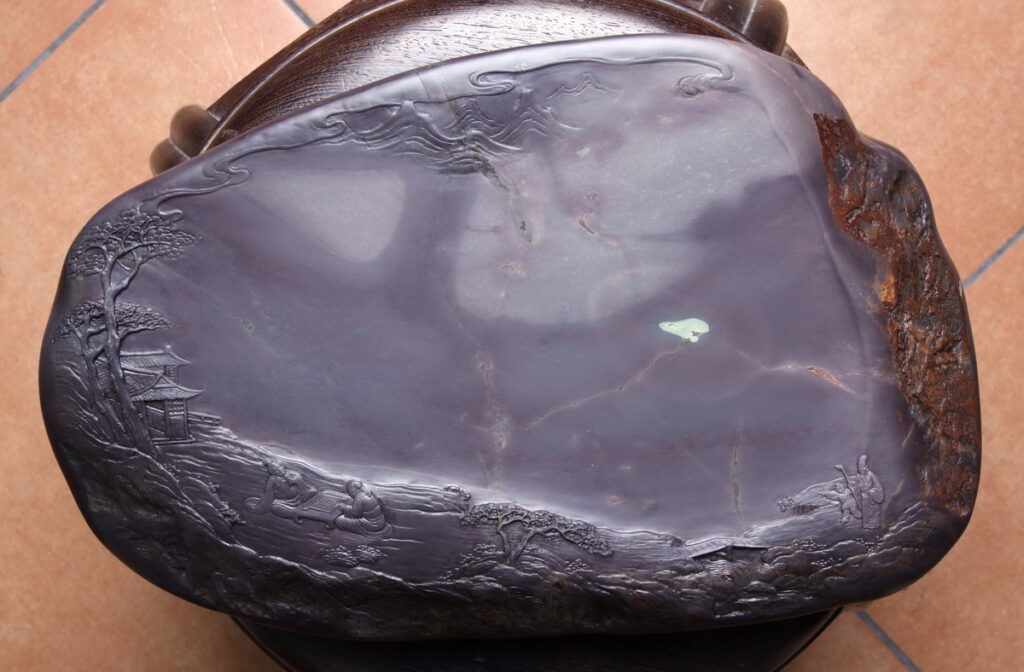

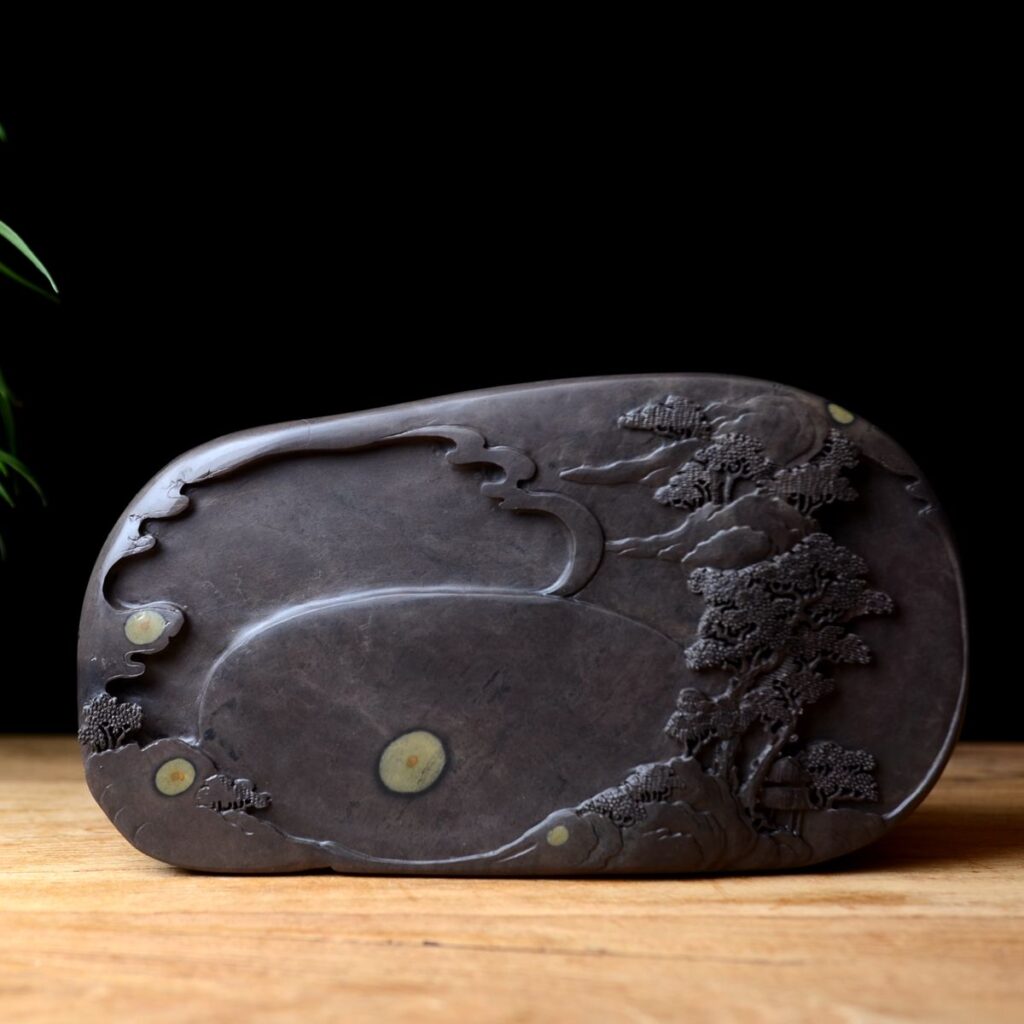
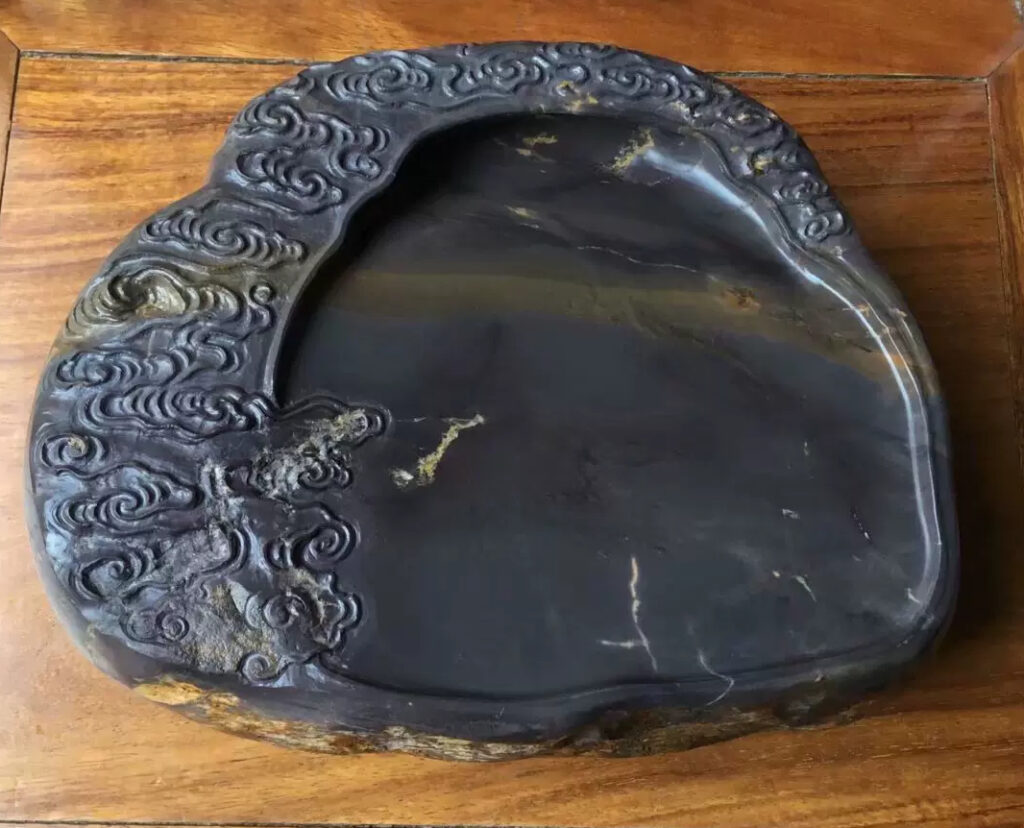
Because of all the beautiful patterns and fine craftsmanship, the ink stone is often a collector’s item, and a nice piece of ink stone could worth millions, let alone the historical ones. The various ore pits where the stones come from make a difference in the quality of the ink stones, and some of the best stones came from ancient pits dating back hundreds or thousands of years. Some of these pits are still being used today, including a Song Dynasty one (the ink stones in our shop come from here).
A good ink stone starts with careful mining, and most of these require tedious and dangerous physical labor and a pair of trained eyes. A skilled miner knows the growth pattern of stones, and he could almost predict the quality and style of a stone from a certain place. An ordinary looking stone to us could contain all the above stated features hidden inside. Craftsmen would often buy an ordinary looking stone based on experience and knowledge and gamble the value inside these ores. Once some great features are revealed, the value of the stone drastically increases.


The beautiful decorations on an ink stone traditionally require careful thinking and lots of creativity. The design often depends on the color and feature of the original stone, and a good craftsman would always draw more focus to such features. Nowadays the carving can also be done using machines, but the pressure and markings made by a machine is nothing compared to the hand works. A good piece of ink stone is usually boxed, either wood or cloth boxes, in order to preserve it from all the dust around. It is also well taken care of, the stone players call this process “raise” the stone, and of course, a good ink stone is used together with the best ink sticks. Brushes are preserved when used on such stones – a good ink stone is very mild and soft to the touch, like the skin of a baby. A good ink stone is also moist, it is a solid form of an ancient Spring. An ink stone is never a tool, it is an art craft.
Enjoy such cultural discussions? Have comments? I look forward to hearing from you!
Related Products From Our Shop
Buy Artworks | Learn Brush Painting | Learn Chinese Calligraphy
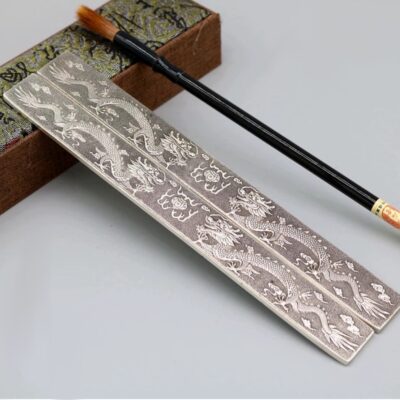
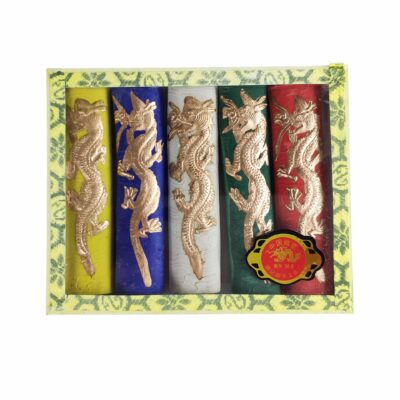
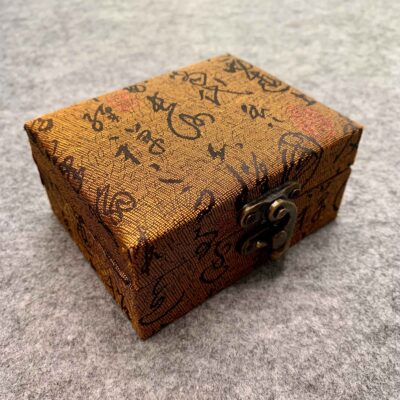
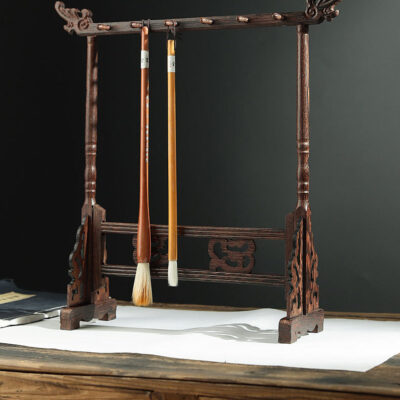
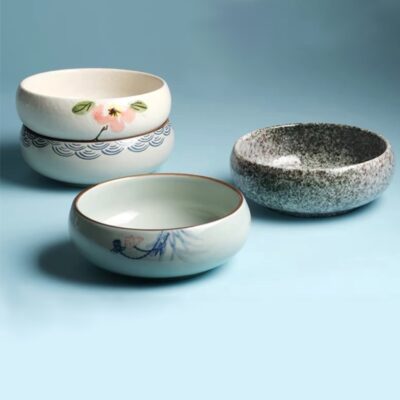

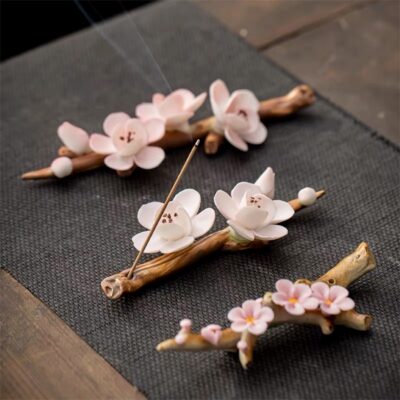

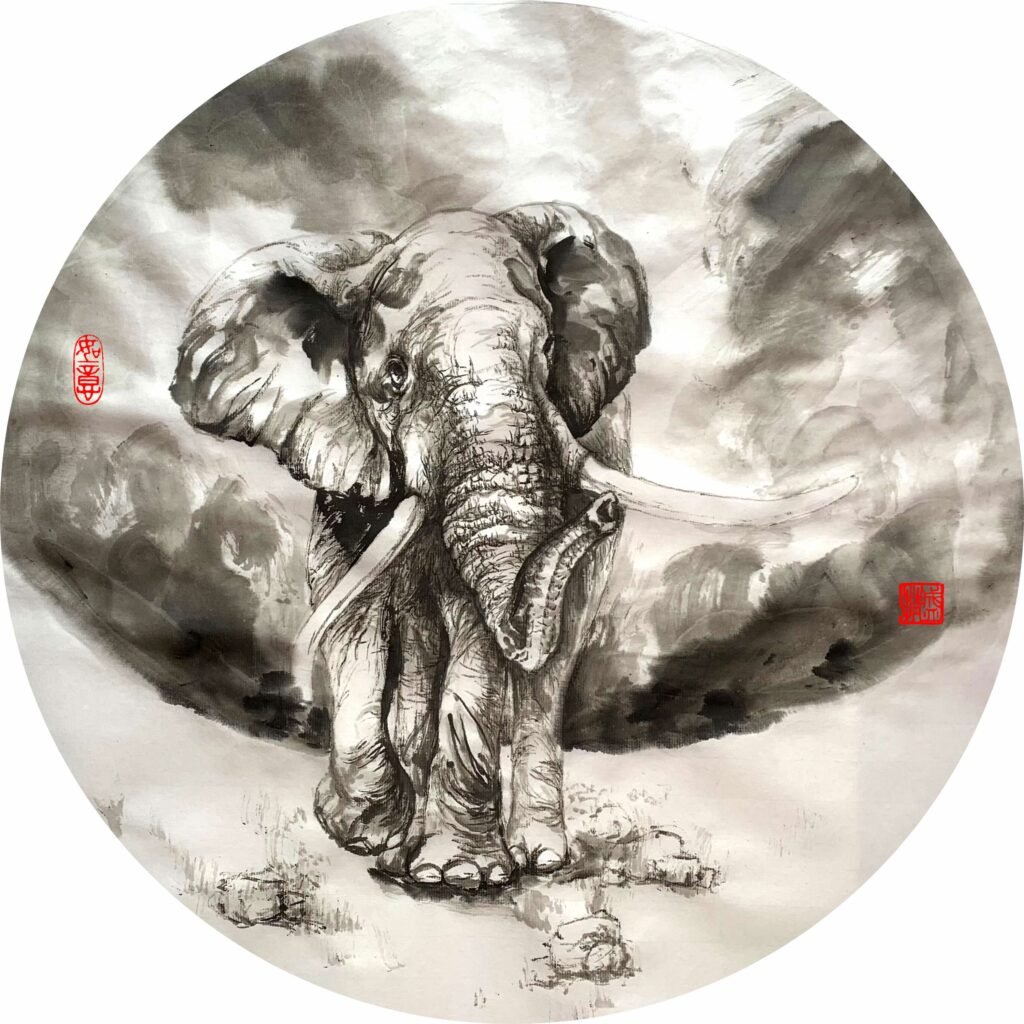
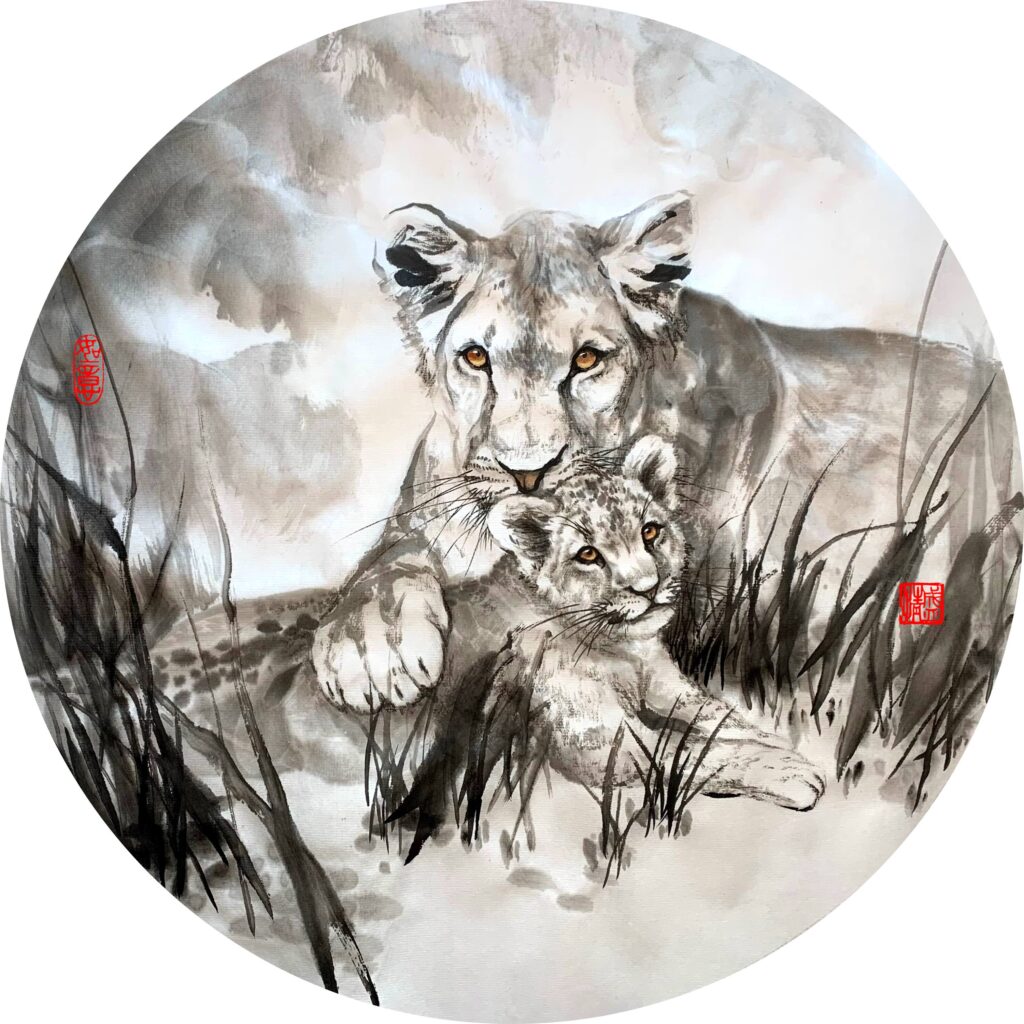
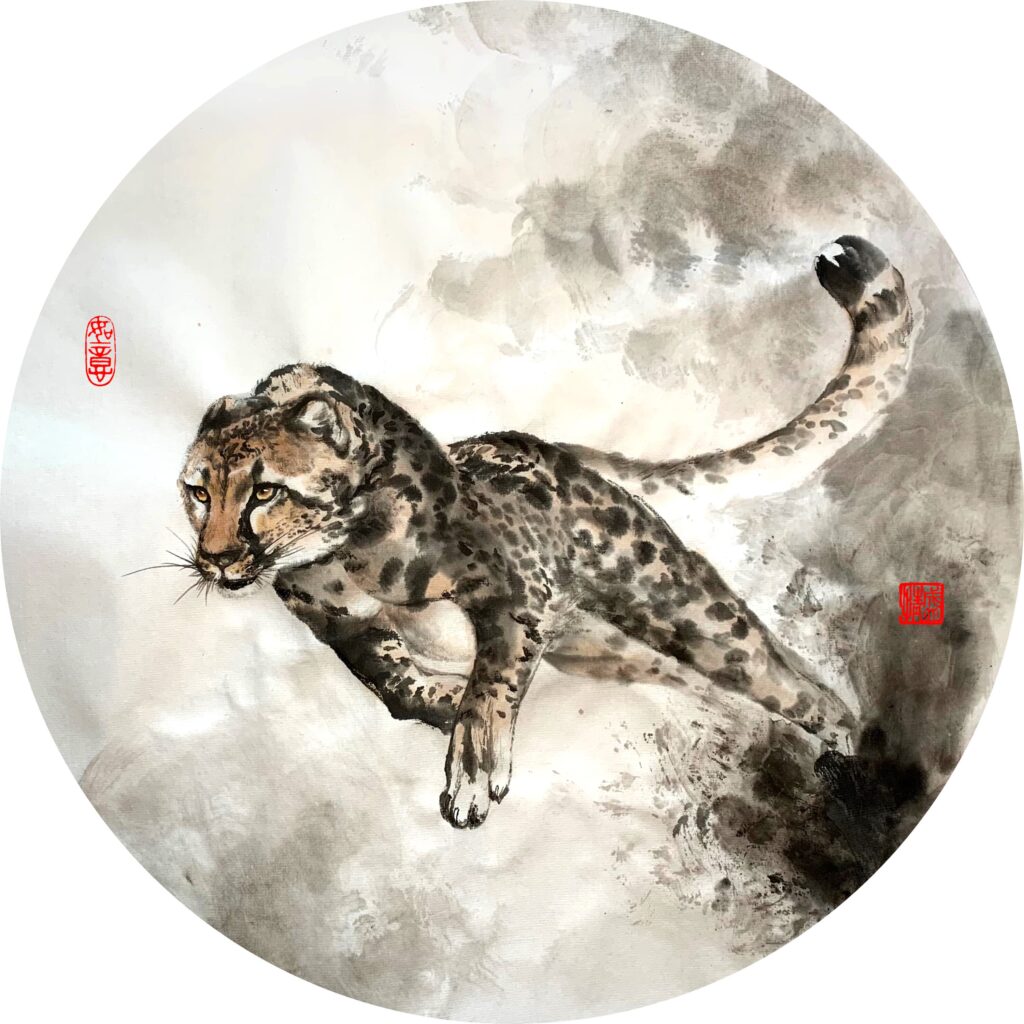
Pingback: Mindful Art, Zen Home | InkDifferent Studio